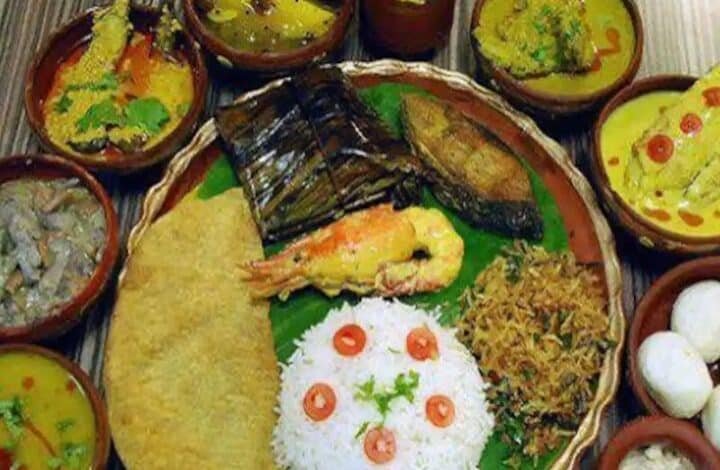Bengali Traditional Food | Ingredients, Dishes, and Cultural Significance
Bengali Traditional Food

Bengali traditional food is a vibrant tapestry of flavors, aromas, and textures, deeply rooted in the culture and history of the Bengal region. From the fertile plains of West Bengal in India to the lush landscapes of Bangladesh, the cuisine reflects a rich heritage influenced by geography, climate, and a confluence of cultures. In this article, we will delve into the essence of Bengali traditional food, highlighting its unique characteristics, key ingredients, and iconic dishes that make it a feast for the senses. Bengali traditional food is a vibrant and diverse culinary tradition that reflects the rich cultural heritage of the Bengal region, spanning both West Bengal in India and Bangladesh. Known for its intricate flavors and emphasis on freshness, this cuisine harmoniously balances sweet, sour, salty, and bitter tastes, creating an unforgettable dining experience.
The Essence of Bengali Traditional Food
At the heart of Bengali traditional food lies a philosophy of balance. Meals are often a harmonious blend of sweet, sour, salty, and bitter tastes, meticulously crafted to create a delightful dining experience. Rice, the staple grain, plays a central role, accompanied by a variety of fish, meat, lentils, and seasonal vegetables. This balance not only satisfies the palate but also reflects the Bengali ethos of appreciating the nuances of flavor.
The use of local produce and fish caught from the numerous rivers and ponds in the region showcases the importance of sustainability and a deep connection to the land. The cuisine also features a wide array of spices, each contributing to the distinct flavors that define Bengali dishes. Rice serves as the staple of Bengali meals, often accompanied by a variety of dishes that showcase the region’s abundant natural resources, particularly fish and vegetables. Fish, especially the iconic hilsa (ilish), is a cornerstone of Bengali diets, celebrated for its rich flavor and versatility in cooking. The use of mustard oil, panch phoron (a five-spice blend), and an array of spices like turmeric and cumin highlights the bold flavors characteristic of Bengali traditional food.
Iconic Ingredients in Bengali Traditional Food
One of the most distinctive aspects of Bengali traditional food is its diverse use of ingredients. Fish, especially varieties like hilsa (ilish), is a cornerstone of the cuisine .
Lentils, known as dal, are a staple in Bengali households. Various types of lentils are cooked in different ways, often flavored with turmeric, cumin, and ginger. These dals provide not only nutrition but also complement the richness of fish and meat dishes.
Vegetables play a crucial role in Bengali traditional food as well. Seasonal vegetables such as pumpkin, eggplant, and various greens are often prepared with spices or made into rich curries. The use of panch phoron, a five-spice blend that includes mustard seeds, cumin, fennel, nigella, and fenugreek, is a hallmark of many vegetarian preparations, lending them an aromatic punch. Seasonality plays a crucial role, with dishes crafted from locally sourced ingredients that change with the harvest cycle. Lentils, or dal, are a daily staple, providing nourishment and complementing the main courses. Vegetables like pumpkin, eggplant, and various greens feature prominently, often prepared in ways that accentuate their natural flavors. Sweets, or mishti, are a significant aspect of Bengali cuisine, with iconic desserts like rosogolla and sandesh marking celebrations and festivals.

Signature Dishes of Bengali Traditional Food
When exploring Bengali traditional food, several signature dishes stand out. One cannot mention Bengali cuisine without highlighting machher jhol, a traditional fish curry. Made with fresh fish, potatoes, and a medley of spices, this dish is typically served with steamed rice, allowing the flavors to meld beautifully.
Another iconic dish is shorshe ilish, where hilsa fish is marinated in a paste of mustard seeds and green chilies before being steamed or cooked in a light gravy. This dish epitomizes the essence of Bengali traditional food, showcasing the region’s love for mustard and fish.
Bengali mishti (sweets) is also a significant aspect of the culinary landscape. Sweets like rosogolla, sandesh, and mishti doi (sweetened yogurt) are integral to celebrations and festivals.
The Importance of Festivals in Bengali Traditional Food
Festivals play a pivotal role in the celebration of Bengali traditional food’s. Durga Puja, the most significant festival in Bengal, is not just a religious occasion but also a culinary extravaganza. Special dishes such as bhog, a vegetarian offering to the goddess, include various types of rice, lentils, and seasonal vegetables. The feast often extends to include elaborate sweets, making it a highlight of the festival.
Other festivals like Poush Mela and Nabanna also showcase the diversity of Bengali traditional food’s.
Health Benefits of Bengali Traditional Food
In addition to its rich flavors, Bengali traditional food’s offers numerous health benefits. The use of fresh vegetables and fish, combined with spices known for their medicinal properties, makes this cuisine nutritious.
Moreover, the emphasis on cooking with mustard oil and natural spices promotes heart health, while the inclusion of lentils provides a good source of protein and fiber. This focus on wholesome ingredients contributes to a balanced diet that has sustained generations.
Read More : Well Health Organic Ayurveda
Final Thoughts Of bengali traditional food
Bengali traditional food’s is more than just a culinary experience; it is a celebration of culture, history, and community. With its emphasis on freshness, balance, and the celebration of seasonal ingredients, this cuisine has something to offer everyone. From the iconic hilsa fish to the delectable sweets that punctuate festive occasions, Bengali traditional food’s is a reflection of the region’s identity and values.
Exploring Bengali traditional food’s allows one to appreciate not only the flavors but also the stories and traditions that accompany each dish. Whether you are savoring a plate of machher jhol or indulging in a sweet treat, the experience of Bengali traditional food is sure to leave a lasting impression. As you embark on your culinary journey, remember that every bite is a taste of Bengal’s rich heritage, inviting you to savor its unique flavors and history.
By embracing and sharing the richness of Bengali traditional food’s, we preserve its legacy and ensure that future generations can enjoy and appreciate this incredible cuisine. So, whether you are a seasoned food enthusiast or a curious novice, take the time to explore the myriad flavors and stories that Bengali traditional food’s has to offer.




